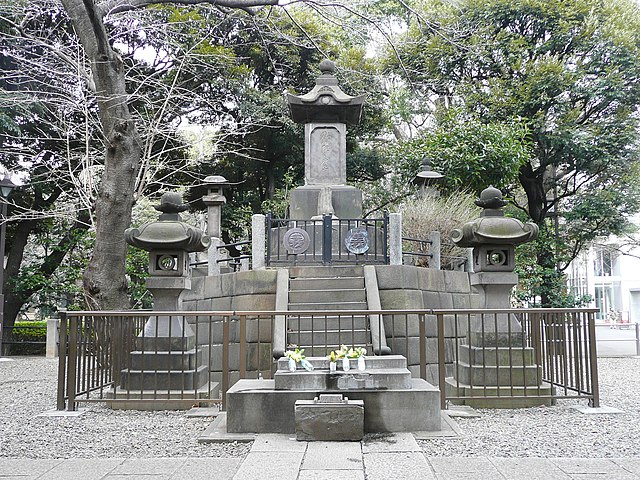Top Qs
Timeline
Chat
Perspective
Battle of Ueno
1868 battle of the Boshin War From Wikipedia, the free encyclopedia
Remove ads
The Battle of Ueno (Japanese: 上野戦争, Hepburn: Ueno Sensō) was a battle of the Boshin War, which occurred on 4 July 1868 (Meiji 1, 15th day of the 5th month),[1] between the troops of the Shōgitai under Shibusawa Seiichirō and Amano Hachirō, and Imperial "Kangun" troops.
Remove ads
Prelude
Summarize
Perspective
Though the Shōgitai was mainly made up of former Tokugawa retainers and residents of the surrounding provinces, some domains supported the Shōgitai, such as Takada han (Echigo Province, 150,000 koku), Obama han (Wakasa Province, 103,000 koku), Takasaki han (Kōzuke Province, 52,000 koku), and Yūki han (Shimosa Province, 18,000 koku).[2]
Facing them were the combined forces of the Chōshū, Ōmura, Sadowara, Hizen, Chikugo, Owari, Bizen, Tsu, Inaba, and Higo domains, under the general command of Chōshū's Ōmura Masujirō.[3]
Shibusawa and Amano initially posted the 2000-strong Shōgitai in Ueno to protect Tokugawa Yoshinobu, who was, at the time, in self-imposed confinement at Ueno's Kan'ei-ji Temple, and Prince Rinnōji no Miya Yoshihisa, the temple abbot[4] who was to become the new dynastic leader of the Tokugawa resistance as "Emperor Tōbu."
From their base, the Shōgitai had been harassing Imperial troops, creating trouble in Edo, thus forcing the Imperial side, although outnumbered, to take action.[5] And yet, the monument erected by the Meiji government upon request of surviving Shōgitai families, clearly and honestly mentions 1,500 Shōgitai versus around 10,000 imperial troops, hence the monument to their warrior spirit and loyalty (reference: Tomb of Shogi-Tai Warriors, Ueno Park, Taito City Board of Education, Oct. 2024). You can also refer to the painting for a visual depiction.[citation needed]
Remove ads
Battle
Summarize
Perspective

The Shōgitai took up positions around Kan'ei-ji (寛永寺), an important Tokugawa family temple, and the nearby Nezu Shrine (根津神社).[6] When the battle began, the forces of Satsuma, led by Saigō Takamori, attacked head-on at the gate, but were stopped by the Shōgitai forces, which were superior in number. The Satsuma forces suffered heavy casualties until the forces of Choshu managed to make a second attack from the rear, which unblocked the tactical stalemate.[5] While the Shōgitai put up stiff resistance, the Tosa troops also used Armstrong cannons and Snider guns to devastating effect, thus ending the last center of resistance in Edo. According to Saigō Takamori:
"With our ample preparations, we made short work of [the enemy], which is an exceptional and extreme delight."
— Saigō Takamori[5]

Rinnōji no Miya escaped, reached Enomoto Takeaki's warship Chogei-maru and was dropped off further north, on the Pacific coast.[6] Harada Sanosuke of the Shinsengumi is said to have joined the Shōgitai and died soon after this battle.[7] About 300 Shōgitai are said to have died in the battle, and a thousand houses were burnt in collateral damage.


Remove ads
References
Further reading
Wikiwand - on
Seamless Wikipedia browsing. On steroids.
Remove ads



